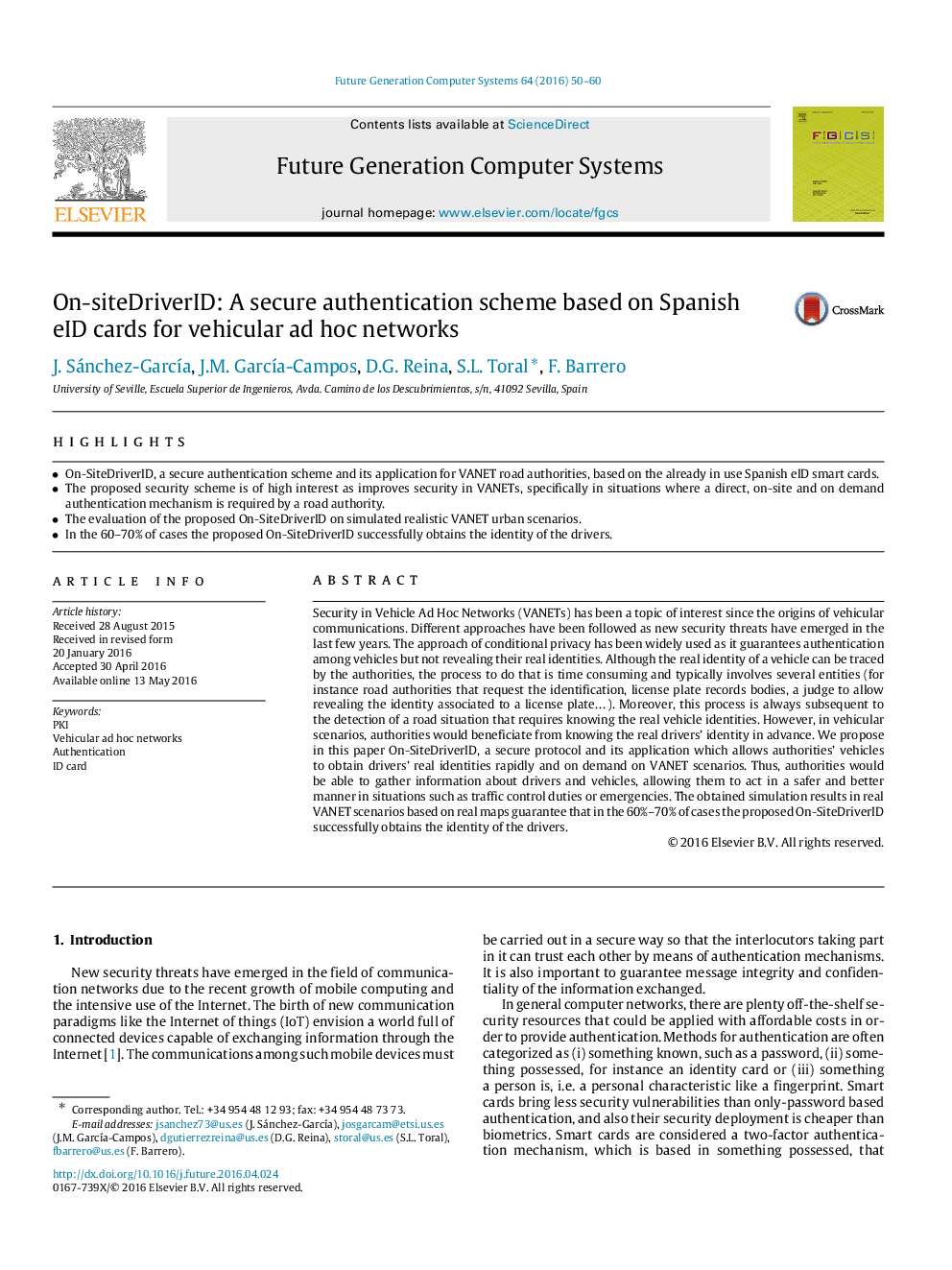| Article ID | Journal | Published Year | Pages | File Type |
|---|---|---|---|---|
| 424782 | Future Generation Computer Systems | 2016 | 11 Pages |
•On-SiteDriverID, a secure authentication scheme and its application for VANET road authorities, based on the already in use Spanish eID smart cards.•The proposed security scheme is of high interest as improves security in VANETs, specifically in situations where a direct, on-site and on demand authentication mechanism is required by a road authority.•The evaluation of the proposed On-SiteDriverID on simulated realistic VANET urban scenarios.•In the 60–70% of cases the proposed On-SiteDriverID successfully obtains the identity of the drivers.
Security in Vehicle Ad Hoc Networks (VANETs) has been a topic of interest since the origins of vehicular communications. Different approaches have been followed as new security threats have emerged in the last few years. The approach of conditional privacy has been widely used as it guarantees authentication among vehicles but not revealing their real identities. Although the real identity of a vehicle can be traced by the authorities, the process to do that is time consuming and typically involves several entities (for instance road authorities that request the identification, license plate records bodies, a judge to allow revealing the identity associated to a license plate…). Moreover, this process is always subsequent to the detection of a road situation that requires knowing the real vehicle identities. However, in vehicular scenarios, authorities would beneficiate from knowing the real drivers’ identity in advance. We propose in this paper On-SiteDriverID, a secure protocol and its application which allows authorities’ vehicles to obtain drivers’ real identities rapidly and on demand on VANET scenarios. Thus, authorities would be able to gather information about drivers and vehicles, allowing them to act in a safer and better manner in situations such as traffic control duties or emergencies. The obtained simulation results in real VANET scenarios based on real maps guarantee that in the 60%–70% of cases the proposed On-SiteDriverID successfully obtains the identity of the drivers.
